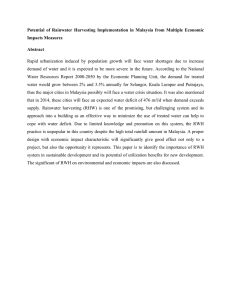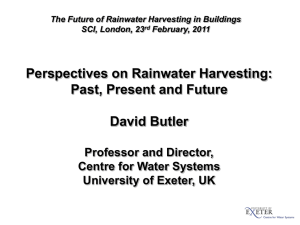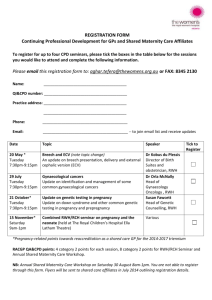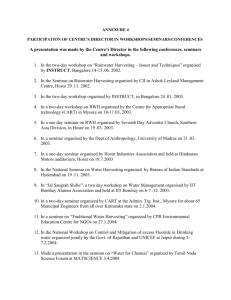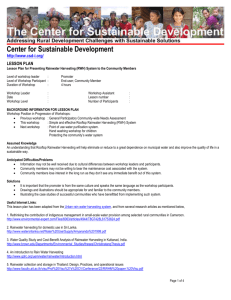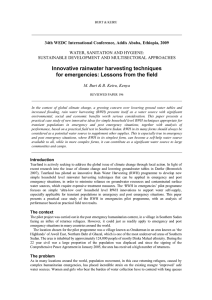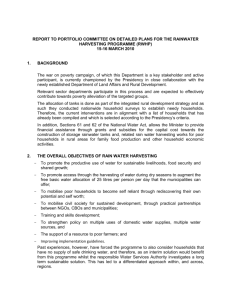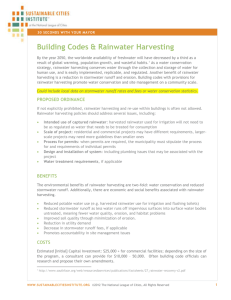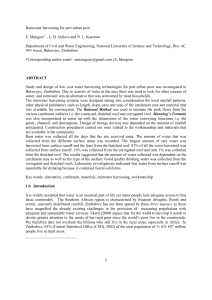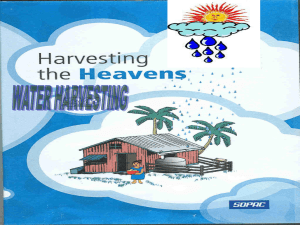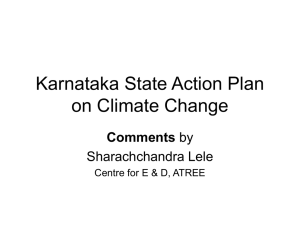Rainwater harvesting article
advertisement
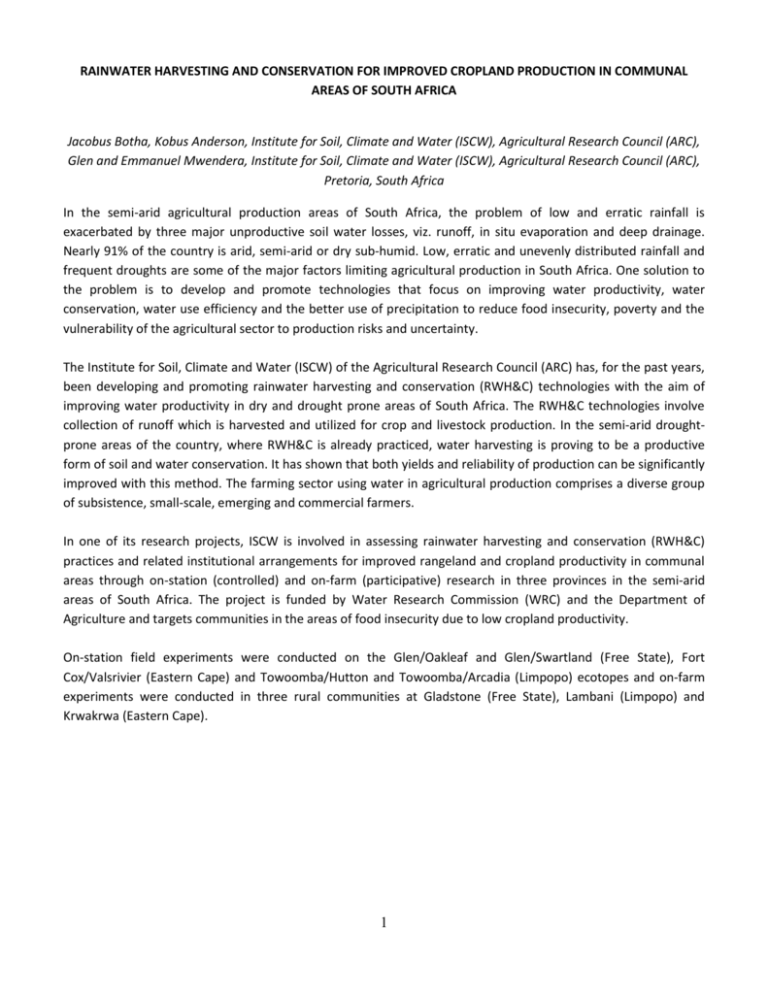
RAINWATER HARVESTING AND CONSERVATION FOR IMPROVED CROPLAND PRODUCTION IN COMMUNAL AREAS OF SOUTH AFRICA Jacobus Botha, Kobus Anderson, Institute for Soil, Climate and Water (ISCW), Agricultural Research Council (ARC), Glen and Emmanuel Mwendera, Institute for Soil, Climate and Water (ISCW), Agricultural Research Council (ARC), Pretoria, South Africa In the semi-arid agricultural production areas of South Africa, the problem of low and erratic rainfall is exacerbated by three major unproductive soil water losses, viz. runoff, in situ evaporation and deep drainage. Nearly 91% of the country is arid, semi-arid or dry sub-humid. Low, erratic and unevenly distributed rainfall and frequent droughts are some of the major factors limiting agricultural production in South Africa. One solution to the problem is to develop and promote technologies that focus on improving water productivity, water conservation, water use efficiency and the better use of precipitation to reduce food insecurity, poverty and the vulnerability of the agricultural sector to production risks and uncertainty. The Institute for Soil, Climate and Water (ISCW) of the Agricultural Research Council (ARC) has, for the past years, been developing and promoting rainwater harvesting and conservation (RWH&C) technologies with the aim of improving water productivity in dry and drought prone areas of South Africa. The RWH&C technologies involve collection of runoff which is harvested and utilized for crop and livestock production. In the semi-arid droughtprone areas of the country, where RWH&C is already practiced, water harvesting is proving to be a productive form of soil and water conservation. It has shown that both yields and reliability of production can be significantly improved with this method. The farming sector using water in agricultural production comprises a diverse group of subsistence, small-scale, emerging and commercial farmers. In one of its research projects, ISCW is involved in assessing rainwater harvesting and conservation (RWH&C) practices and related institutional arrangements for improved rangeland and cropland productivity in communal areas through on-station (controlled) and on-farm (participative) research in three provinces in the semi-arid areas of South Africa. The project is funded by Water Research Commission (WRC) and the Department of Agriculture and targets communities in the areas of food insecurity due to low cropland productivity. On-station field experiments were conducted on the Glen/Oakleaf and Glen/Swartland (Free State), Fort Cox/Valsrivier (Eastern Cape) and Towoomba/Hutton and Towoomba/Arcadia (Limpopo) ecotopes and on-farm experiments were conducted in three rural communities at Gladstone (Free State), Lambani (Limpopo) and Krwakrwa (Eastern Cape). 1 An ARC-ISCW staff member demonstrates the construction of an in-field rainwater harvesting basin at a homestead garden in Krwakrwa, Eastern Cape Province An ARC-ISCW staff member explains the principles of rainwater harvesting to community members from Lambani village, Limpopo Province Staff members from Fort Cox Agricultural College help to connect a Daling plough to a tractor at a cropland in Krwakrwa village, Eastern Cape Province Mechanized basins filled with water after a rainfall event Rangeland experiments, using various RWH&C practices, to improve the condition of the veld were also conducted in these communities. The veld rehabilitation increased forage production by improving species composition and basal cover. The RWH&C practices, implemented with specially designed implements pulled by a tractor, that were tested with the on-station field experiments on the croplands included conventional tillage (as control), no-tillage, minimum tillage, mechanized basins; in-field rainwater harvesting (IRWH) with a 2-m runoff area; IRWH with a 2.4-m runoff area and Daling plough. The results so far show that crop yields are much higher under RWH&C practices than under conventional tillage practices commonly used by community members. This is attributed to increases in rainwater productivity and higher water use efficiency. The ARC-ISCW has demonstrated the benefits of RWH&C which community members have adopted. The RWH&C (IRWH, Daling plough and mechanized basins) practices increased maize yields by 14, 28 and 11%, respectively as compared to conventional tillage. Rainwater productivity was further improved by 7, 6 and 4% on RWH&C practices. 2 The RWH&C (IRWH and mechanized basins) have been implemented on 11 ha in KrwaKrwa (Eastern Cape) and has also been adopted by 75 farmers in Lambani (Limpopo) on an area of 75 ha. These community members have harvested more grain yield for household consumption on RWH&C than on conventional tillage. By applying RWH&C practices for food production, community members are now able to produce more than what is needed for household consumption and the surpluses can be sold to improve household income. 3
